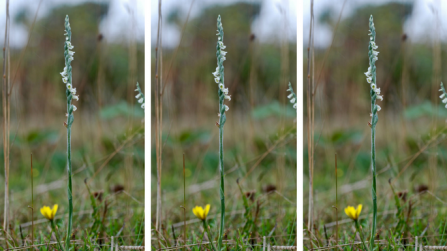
Autumn lady's-tresses by Adrian Wallington.

Autumn lady's-tresses by Adrian Wallington.
From late summer to the end of September, when conditions are right, you may see thousands of autumn lady’s-tresses in the grassland at Greenham Common.
This delicate plant is a late-summer flowering orchid with white, bell-shaped flowers arranged in a single spiral around the stem. The plants growing at Greenham Common may form the largest population on a single site in southern Britain.
The best spot to see these beautiful snow-white flowers twirling around soft grey stems is on the short dry turf 100m east of the Control Tower car park. From late afternoon the tiny flowers waft a soft, coconut fragrance. Tread carefully or you’ll squash them!
Join our orchid extravaganza guided walk on Sunday 5th September to look for them.
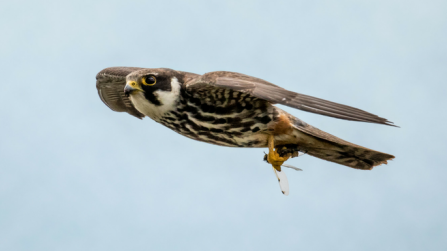
Hobbies are amazing aerial acrobats, catching, and often even eating, prey such as dragonflies while flying. They will even catch small birds to eat. They spend the summer in Britain before heading back to warmer, southern countries for the winter.
Look out for them flying over heathland, wetlands and along woodland edges where there is plenty of food for them to catch.
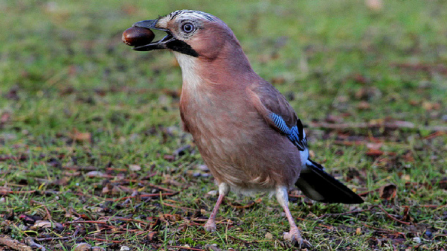
A jay doing its duty for the next generation of oak trees. Photo by Margaret Holland
Despite being a colourful bird, jays spend most of the year hidden away in woodland, but in the autumn you can see them gathering and storing acorns to eat during the winter. Look out for them burying acorns on lawns. Listen out too, they make a loud screeching call, which is generally heard more often than jays are seen.
Did you know their scientific name, Garrulus glandarius, translates roughly as ‘chattering acorn gatherer’.
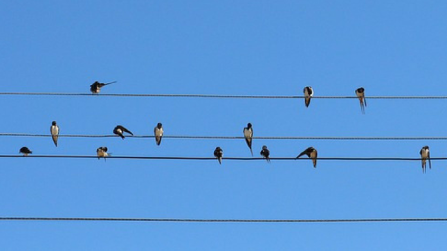
Swallows on telegraph wires. CC
Look out for flocks of swallows and house martins lined up on telegraph wires as they gather before heading south for the winter. You might also find large flocks gathering in areas of reedbeds, where they feed up on insects before their journeys to sub-Saharan Africa.
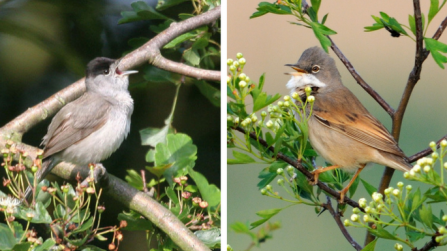
Now that summer is drawing to a close more of our summer bird visitors are beginning their journeys south for the winter. Look out for warblers, such as blackcaps, above left, and whitethroats, above right, feeding up on berries to fuel their long flights to southern Europe and beyond.
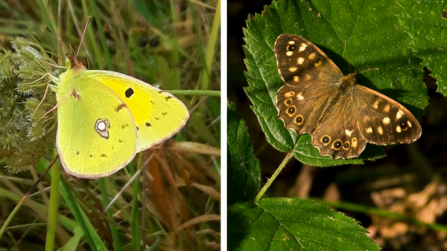
You can still see butterflies flying around on warm days in late summer and early autumn. Look for speckled wood butterflies flying in sunny glades and along rides in woodland, or basking in pools of sunshine.
Clouded yellows are a migratory butterfly, arriving in Britain from Europe. Keep an eye out for them as you may see them in many different habitats, but particularly where clovers are growing as this is one of the food plants for their caterpillars.
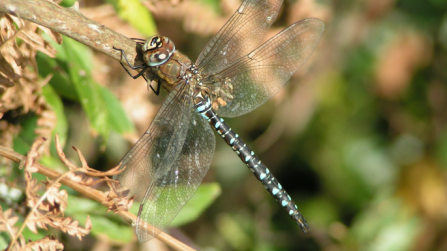
Migrant hawker dragonfly. Picture: Richard Burkmarr
Migrant hawkers are one of the later dragonflies to emerge as adults in the summer, and you may see them still flying as late as November. They breed in pools of standing water but look for the adults flying in gardens, woodland and along hedgerows too.
As a group, hawkers are the largest and fastest flying dragonflies; they catch their insect-prey mid-air and can hover or fly backwards.
A pond is one of the best things for wildlife to add to your garden.
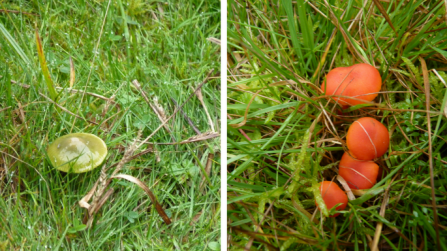
Don’t wait until the midst of autumn to look for fungi. Waxcaps are a group of generally colourful fungi that grow on nutrient-poor grassland or heathland. Some species, like parrot and golden waxcaps, appear in late summer. Some waxcaps are of conservation concern because this type of habitat is declining.
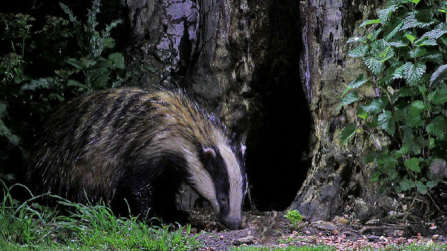
As dusk gets earlier why not head out and look for badgers feeding on fruit and nuts, and digging for worms and insect larvae. Head to a sett before sunset and sit quietly – you may be lucky to see them emerge and feed!
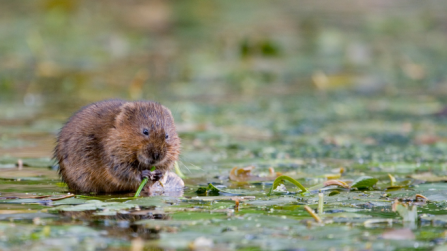
Water vole. Picture: Tom Marshall
Late summer is a good time to look out for water voles as the vegetation along river banks is starting to die back. There are also lots of young water voles around as they’ve grown large enough to leave the burrows and find food for themselves.
Did you know BBOWT’s water vole recovery project is the longest-running such project in the UK?
Sign up below to receive the latest news from BBOWT, tips about how you can help wildlife, plus information on how you can get involved.